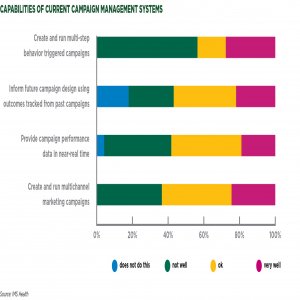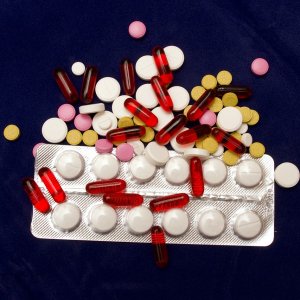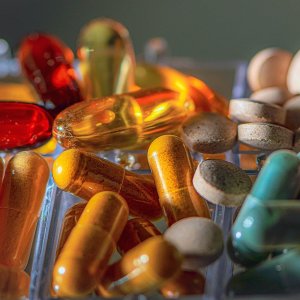Manifesting Market Potential

STORY INLINE POST
Q: What services does ANAFAM offer to the companies it represents in Mexico and what are the advantages of belonging to the association?
A: The association represents 27 different entities, including laboratories, companies, and public institutions. Through the association, we create different initiatives to support the national industry to manifest its position and monitor its interests. We also promote initiatives facilitating tenders in consolidated purchasing of high quality medication for the public sector in order to bring healthcare to the public. We collaborate with COFEPRIS to establish norms for national and transnational companies alike and in this way, development of the industry is promoted globally. We want to generate an increased competition for the national industry to enable compliance with FDA standards.
Q: The generics industry currently represents more than 85% of the market volume. What have been the key factors in creating this growth?
A: The generics market gained momentum in 2010 thanks to a legislative change subjecting generic medicines to bioequivalence studies, which guarantees that the generic has the same efficacy and behaves in the same way as the innovator. COFEPRIS registrations guarantee that the medications comply with the bioequivalence norms and any non-compliant medication is immediately removed from sale. The performance of these studies prompted national laboratories to overhaul their infrastructure and increase the quality of generics while simultaneously working to extend their market share. After the expiration of several patents in 2012, national laboratories began to produce generic versions and transnational companies decided to continue manufacturing the same medications but to commercialize them as generics. Moreover, the healthcare authorities realized the need to obtain a large quantity of medication at a low cost in order to satisfy the needs of the public health sector. The appointment of Mikel Arriola as director of COFEPRIS created a clearer interpretation of the legislation after expiration of an innovative patent, creating more opportunity for the manufacture of generics. The Continuous Release of Generics Program has subsequently allowed the release of more than 357 generics since 2012 until the present day.
Q: Did the bioequivalence studies improve the image of generics for the general public?
A: The pharmaceutical industry as a whole had to proactively demonstrate the benefits of generic medications with methods including implementation of political and advertising campaigns, education of physicians, and the hosting of conferences and training courses. We had to raise awareness that generics are not necessarily the same as biosimilars and provide proof through bioequivalence testing. We made concerted efforts to educate the government health agencies and their subsidiaries, primarily about the economic benefits these products represent. Currently 20% of the government’s pharmaceutical budget is used to buy generics, which represent 80% of acquisitions, while 80% of the budget is used to buy innovators that constitute 20% of total acquisitions. Generics, therefore, have created tremendous benefits for the economy, patients and the health sector in general. Generics have also benefitted the end customer, since they have facilitated a reduction in out of pocket spending from 49.6% to 44.1% over the last four years according to COFEPRIS data.
Q: How does the production of branded generics by international companies impact the local industry?
A: This has posed a challenge, but it has also forced the national industry to increase competition and cooperation, and the support of the healthcare authorities has in turn promoted R&D within local industry. In 2010, with the expiration of so many patents, many national companies began to focus their resources on research and invest in infrastructure and equipment to increase competition and various national companies focused their efforts on the acquisitions to boost their generic lines. They collaborated with the government agencies to strengthen national regulation in order to compete overseas. A significant area of focus for the whole sector is reducing dependency on importing materials from abroad. Before NAFTA was ratified in 1994, Mexico had a strong pharmachemical industry but this treaty forced many small companies out of business. The pharmaceutical sector became dependent on importing core pharmachemical materials and currently 95% of raw materials are imported. The national pharma industry in Mexico is attempting to return to self-reliance and not depend so much on importation of raw materials, which mainly come from China and India. The pharmaceutical industry is confident in the growth potential of pharmachemicals in Mexico, given the support of the health authorities and the federal government. Now Commissioner Arriola is implementing various measures to promote more competition in the sector through a modification of the Good Practice regulations relating to medication manufacture (NOM-059-SSA1-2013) and drugs (NOM-164-SSA1-2013), the purpose of which is motivating companies to adhere to the high quality standards demanded by the FDA.
Q: What strategies have been implemented by the sector to increase exports?
A: The current vision of the industry is investment to increase competition, which will facilitate exportation. However, many of the companies we represent export within Latin America, especially now that the Pacific Alliance has been introduced so we are currently negotiating with these countries to improve healthcare regulations so that they can export pharmaceuticals to Mexico. At the moment, we are working towards FDA recognition of Mexican registrations and COFEPRIS has also received international recognition by the Panamerican Health Society and the WHO. The organization is currently working towards accreditation by the Pharmaceutical Inspection Convention and Pharmaceutical Inspection Cooperation Scheme (PIC/S). Currently only 27 countries are recognized by this association.
Q: What does the Trans-Pacific Partnership (TPP) contribute to the national industry?
A: The current TPP proposals for reform are strongly influenced by international pharmaceuticals, mainly from the US, which could be problematic for the Mexican industry since one of the issues the TPP deals with is the strengthening of intellectual property regulations. Any delay in Mexico meeting the imposed standards would directly impact the growth of the industry, exportations, and the development of biotechnological medications by local laboratories. One concern is that the TPP is proposing protection clinical data for biotechnological medications for 12 years in addition to 20 years of patent protection, which would paralyze Mexican production of biocomparables and would create enormous costs for the government in the purchase of biotechnological pharmaceuticals. Another problem is the lengthening of patents, supposedly extending the patent by the time taken by COFEPRIS to authorize the health registrations, which would be acceptable since COFEPRIS has streamlined its process of registration authorization. However, another goal is to extend the patent by the amount of time taken by the Institute of Intellectual Property to grant a patent, which can take a number of years. This treaty is highly controversial and has strong opposition from several groups, including Doctors Without Borders.
Q: Are you concerned the TPP will be approved too soon?
A: We still do not know whether or not the TPP will be implemented but recently the US government assigned the legislation to its fast track. We have been in negotiations and we are worried that if this law passes through the fast track process and is approved without a comprehensive analysis of each individual part, it will have a catastrophic effect on the national pharmaceutical industry. The main problem with this regulation is with biotechnological medications, which have existed in Mexico for 20 years, even though no proper regulation exists for them. The costs implicated in completely characterizing these medicines to comply with the TPP proposal can cost between US$5 million and US$6.2 million, which is not feasible for small companies that possess several molecules. We must improve communication with the authorities since these costs are unacceptable for laboratories, and will generate highly inaccessible prices for patients who will be priced out of accessing the medications that they need. Currently the public health sector is the main buyer of these types of medications so if the costs increase, the public sector will not be able to provide medicine universally.
Q: What has been the market impact of pharmacy ownbrand pharmaceuticals?
A: In my opinion this benefits the sector, since they form part of a wide range of pharmaceutical products. The pharmacies producing these brands are national and international generics manufacturers. The presence of doctors in pharmacies is a completely commercial initiative that can be seen as a double-edged sword. If the medicine does not have the desired effect, the patient can lose trust in all the products with that pharmacy’s brand, unaware that this medicine was produced in a laboratory that has no affiliation with the pharmacy, therefore inappropriate distribution of these products affects the manufacturing laboratory. Mexicans are not accustomed to verifying the manufacturer of the medicine. For this reason, it is necessary to ensure that all pharmaceuticals, generic or otherwise, comply with all quality and safety regulations. Many pharmacy chains provide assurances that their suppliers maintain high standards of quality, with the aim of protecting their brand. As an association, we host events in collaboration with ANADIM and ANAFARMEX to promote education around generics and we feel that the entire industry is jointly liable in the prioritization of common objectives.























